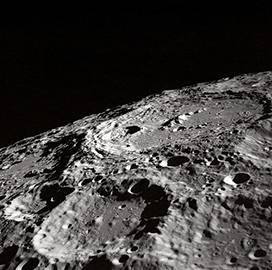
Lunar surface research
Navy Scientists Identify Hydrogen From Lunar Samples
U.S. Naval Research Laboratory researchers have detected hydrogen in lunar samples received from the Apollo mission.
According to the NRL, the presence of solar wind hydrogen on lunar soil samples indicates the presence of water on the moon – a vital resource for future lunar bases and long-range space exploration. Katherine Burgess, a geologist at NRL’s Materials Science and Technology Division, said it is the first time scientists were able to detect hydrogen-bearing species in lunar samples.
Previous testing using Apollo samples allowed scientists to detect helium in lunar soil grains, the U.S. Navy said Tuesday.
The hydrogen discovery is part of the U.S. government’s efforts to expand lunar exploration and set up facilities on the moon for future missions.
In mid-October, the Johns Hopkins University-Applied Physics Laboratory announced that it would provide the Defense Advanced Research Projects Agency science and technology expertise to help identify and propose lunar critical infrastructure standards. The S&T expertise will support the Lunar Operating Guidelines for Infrastructure Consortium, which aims to accelerate standards development for lunar power delivery, communications, surveillance and other areas.
In August, NASA announced a plan to send three mini rovers to the moon to see if they can autonomously create a 3D map of the lunar surface.
Category: Space




